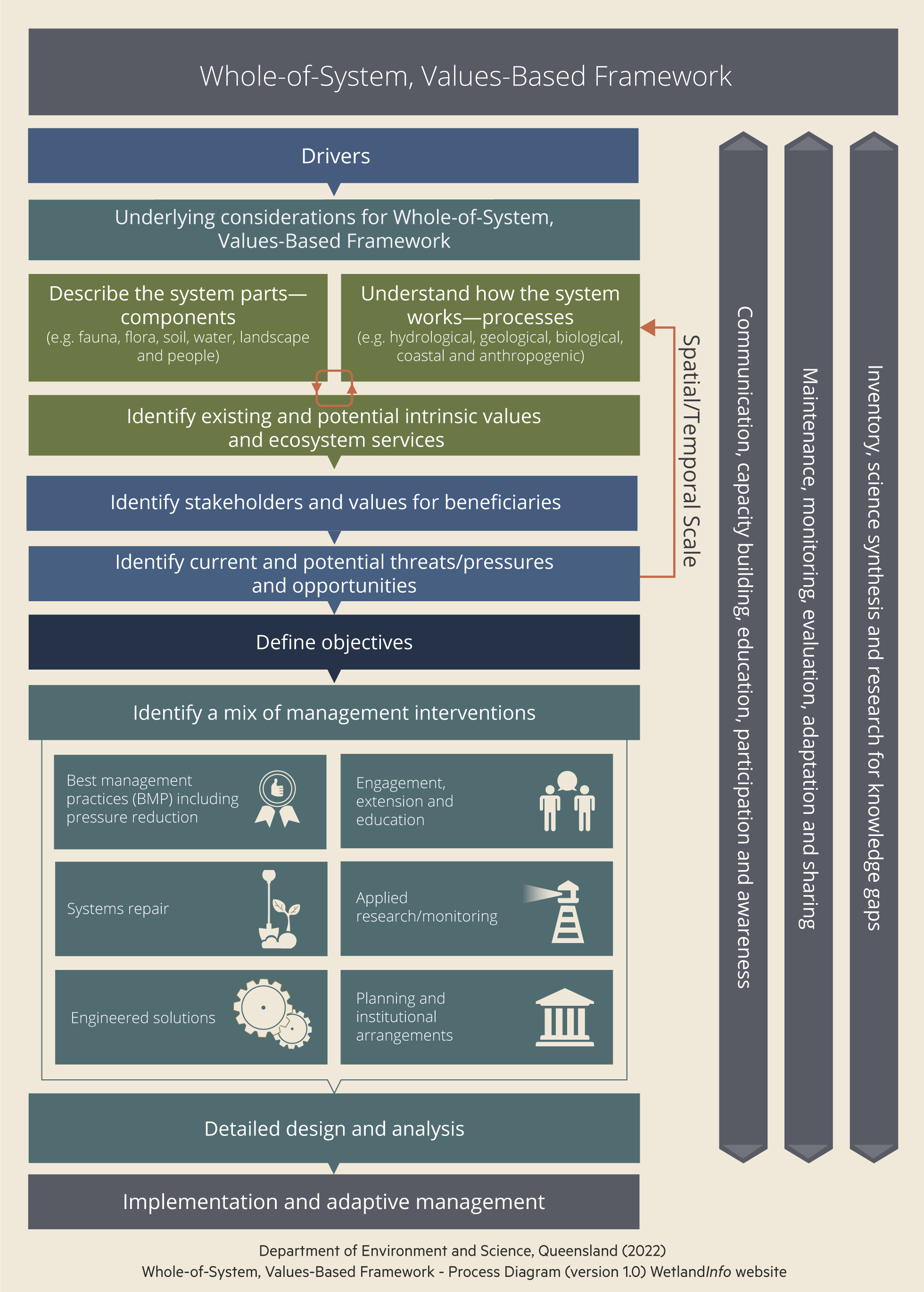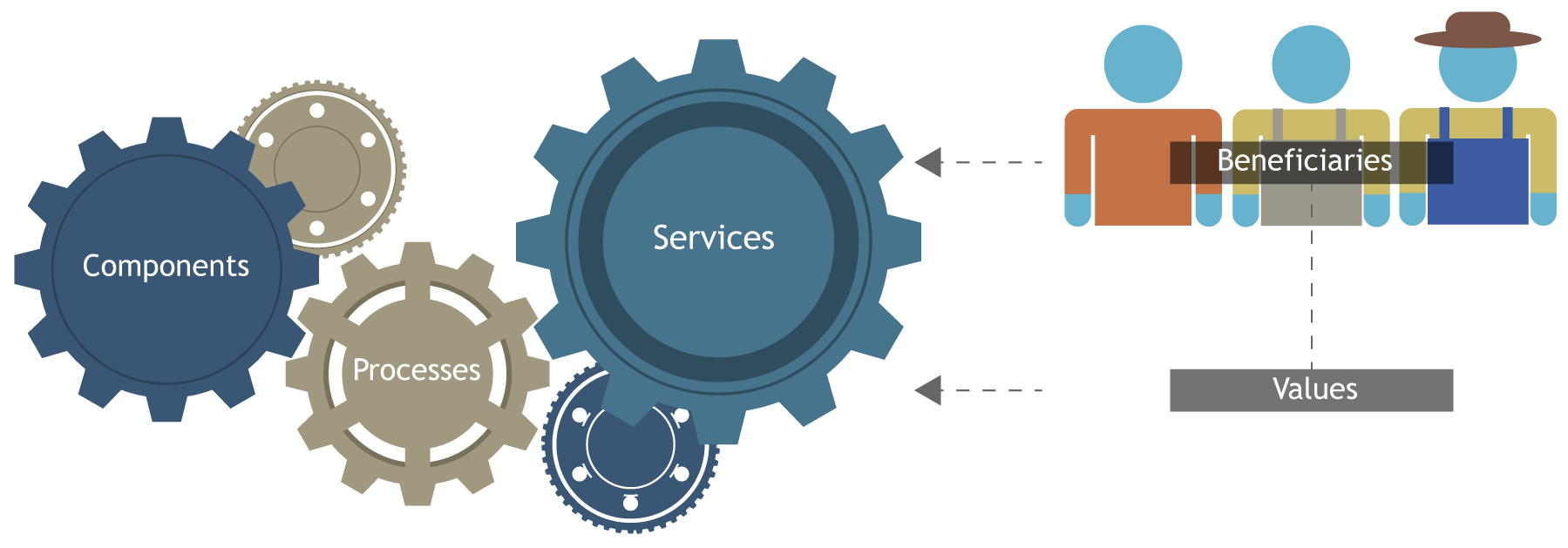|
|
Whole-of-System, Values-Based FrameworkUnderstanding the parts of a system (e.g. the components), how it works (e.g. the processes), how it integrates with the landscape at multiple scales, and the services and values it provides, are critical to developing appropriate management activities. A Whole-of-System, Values-Based Framework factsheet is available.
What is whole-of-system, values-based management?Whole-of-system, values-based management, involves:
Whole-of-system management is supported by critical underlying considerations, including:
What is values-based management?Values-based management is a management approach that is adaptive (e.g. informed by “learning-by-doing”), based on the intrinsic and existence values and services provided by a system, and accounts for the different values, management needs, and priorities of stakeholders and beneficiaries. Values-based management ensures that biophysical, social, cultural, and economic values inform management priorities and are the basis for ongoing monitoring and evaluation of management performance. What is the Whole-of-System, Values-Based Framework?The Whole-of-System, Values-Based Framework (the Framework) draws explicit connections between the biophysical environment, the beneficiaries of the services provided by that ecosystem and their values. The Framework uses a holistic management approach to achieve outcomes that consider the biophysical environment alongside social, economic and cultural outcomes[2]. For example, coastal sand dunes (components) provide the service of protection from storms (process) for people living on the coast (beneficiaries) who may value the coastline for its aesthetic view. The Framework has been developed through the synthesis of other frameworks and tools and extensive stakeholder consultation and is underpinned by underlying considerations. Why is the Whole-of-System, Values-Based Framework necessary?Humans are impacting ecosystems globally, including wetlands, through a range of activities such as development, changes in land use, and climate change[3]. Pressures on these ecosystems are not limited to those occurring within the ecosystem itself. They can also include pressures from the broader catchment and landscape[3]. Humans also highly value these same systems for the biophysical, social, economic and cultural services they provide. The Framework is necessary to ensure that appropriate outcomes are achieved for the entire social-ecological system. For example, for a fishways project, there are multiple interests that need to be considered, such as current uses for water infrastructure (e.g. water supply) and social and economic interests (e.g. preserving fish populations for fisheries), in addition to improving fish passage and preserving/improving key habitat areas for fish life history events. Using the Framework ensures that these varying interests are considered when building fishways/removing barriers. Many management frameworks focus on managing the parts of the ecosystem individually (e.g. economic, biophysical, etc.), rather than using an integrated approach that incorporates all parts of a social-ecological system[2]. Most existing management frameworks focus on biophysical/ecohydrological processes and do not adequately consider the social and cultural aspects of the environment[4]. Failure to use an integrated, whole-of-system, values-based approach can lead to poorly designed management interventions that generate biophysically or socially inappropriate outcomes[2][4] or have low buy-in from beneficiaries and other stakeholders because their values were not considered when the management interventions were developed[1]. The Framework forms the logic and underpins the Queensland Aquatic Ecosystem Rehabilitation Process and the Queensland River Rehabilitation Management Guideline. Pages under this sectionReferences
Last updated: 7 June 2022 This page should be cited as: Department of Environment, Science and Innovation, Queensland (2022) Whole-of-System, Values-Based Framework, WetlandInfo website, accessed 8 May 2025. Available at: https://wetlandinfo.des.qld.gov.au/wetlands/management/whole-system-values-framework/ |

 — Department of the Environment, Tourism, Science and Innovation
— Department of the Environment, Tourism, Science and Innovation




